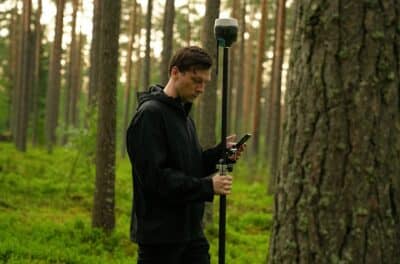The field of environmental science has long been concerned with the impact of human activities on the natural world. As our understanding of environmental issues deepens, so does the urgency to find innovative solutions to safeguard our planet’s delicate ecosystems.
In this quest, technology has emerged as a powerful ally, revolutionizing the way environmental science is conducted and offering unprecedented opportunities to address global challenges. From data collection and analysis to monitoring and conservation efforts, technology has become an indispensable tool in the hands of environmental scientists.

IMAGE: UNSPLASH
Remote Sensing And GIS
One of the most transformative technologies in environmental science is Remote Sensing, which involves gathering information about the Earth’s surface from a distance. Satellites equipped with sensors can monitor changes in land cover, deforestation, urban expansion, and even pollution levels on a global scale.
Geographical Information Systems (GIS) further complement remote sensing by enabling researchers to analyze and visualize geospatial data, allowing for better decision-making in conservation planning, resource management, and disaster response.
Big Data And Machine Learning
The advent of Big Data and Machine Learning has significantly enhanced the capacity to process vast amounts of environmental data efficiently. This technology enables environmental scientists to recognize patterns, predict trends, and gain valuable insights from complex datasets. Machine learning algorithms can identify endangered species, forecast weather patterns, and even predict the outbreak of diseases to aid in proactive conservation measures.
Internet Of Things (IoT) And Sensor Networks
The Internet of Things (IoT) has enabled the development of sensor networks that collect real-time environmental data. These sensors can be deployed in various ecosystems, from oceans and forests to cities, monitoring parameters like temperature, humidity, air quality, and water levels. This constant flow of information assists researchers in understanding the dynamic changes occurring in the environment and helps in the early detection of potential ecological threats.
Rugged Technology
In the field of environmental science, rugged technology has emerged as a game-changer, particularly in challenging and remote environments. Rugged technology refers to robust and durable devices designed to withstand harsh conditions, such as extreme temperatures, humidity, dust, and water exposure.
These specialized tools are vital for researchers working in rugged terrains like rainforests, deserts, polar regions, or deep-sea exploration. Rugged laptops, tablets, and smartphones enable scientists to collect data, run simulations, and communicate in real-time, even in the most unforgiving environments.
With rugged technology at their disposal, environmental scientists can venture into previously inaccessible areas, ensuring comprehensive data collection and promoting a deeper understanding of our planet’s diverse ecosystems.
Environmental Modeling And Simulation
Simulation models have become invaluable in environmental science, simulating scenarios and predicting outcomes to assist policymakers in making informed decisions. Climate models, for instance, can project the long-term effects of greenhouse gas emissions, aiding in the development of mitigation and adaptation strategies. Such models also support disaster preparedness and risk assessment.
Conservation Drones
Unmanned aerial vehicles, or drones, have revolutionized conservation efforts. Drones are employed to monitor wildlife populations, survey remote and difficult-to-reach areas, detect illegal activities such as poaching and logging, and even reforest large areas with precision. Their non-intrusive nature minimizes disturbances to wildlife, making them an eco-friendly tool for conservationists.
Citizen Science and Mobile Apps
Technology has democratized environmental science by empowering citizens to participate actively in data collection and monitoring. Through mobile apps and online platforms, people can report wildlife sightings, record climate data, and contribute to various environmental research initiatives. This vast network of citizen scientists supplements traditional data collection efforts and increases the scale and accuracy of environmental research.
The fusion of technology and environmental science has unleashed unprecedented possibilities for understanding, monitoring, and conserving our planet. From satellite-based remote sensing and big data analytics to conservation drones and citizen science, technology has become a formidable force in the fight against environmental challenges. By harnessing these technological advancements, environmental scientists can make informed decisions, develop sustainable policies, and foster a greater sense of stewardship among people.
However, while technology is a powerful tool, its effectiveness ultimately depends on human commitment and collective action to protect and preserve our fragile planet for future generations. As technology continues to evolve, it is crucial to harness its potential responsibly, ensuring a harmonious coexistence between humanity and nature.

IMAGE: PEXELS
If you are interested in even more technology-related articles and information from us here at Bit Rebels, then we have a lot to choose from.
COMMENTS